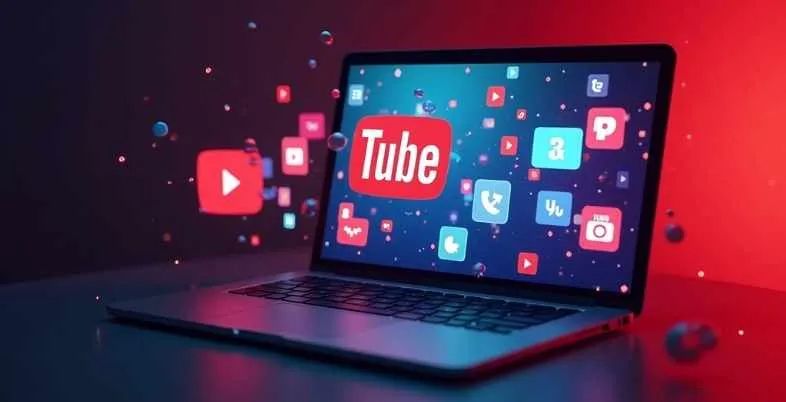Have you ever gone on YouTube for hours and watched one video and ended up learning about birds that fly across the Arctic? That is what happens to us! YouTube is a never-ending source of entertainment and knowledge. It is so big that people have come to accept it as the destination of watching videos just as Google is the destination of searching.
However, there are times when we desire something other than that. Perhaps you are a self-made video maker and you get frustrated by the rules that are constantly changing. Perhaps, you watch videos and are willing to break your phone after another irritating advertisement. Or perhaps you just want to know what other video worlds are out there that aren’t the red-and-white logo.
And, in case any of that rings true to you, you are at the right place. The internet is like a big ocean and youtube is just one very large island. You can find lots of other wonderful islands -or video platforms- to visit. This article is your amicable compass to finding some of the best YouTube alternatives in the present day. Shall we have an adventure?
Why Look for YouTube Alternatives?
Online video is still led by YouTube but it is not all rosy. A lot of video makers and video viewers seek alternative destinations. It is similar to having just one TV channel; you feel like seeing what is on the other channels.
The following are some of the common reasons why people are seeking sites such as YouTube:
- Too Many Adverts: YouTube has too many adverts. You see an advertisement before the video, at times two. You have the ads in between the videos. There are those moments when you feel like you are watching more advertisements than programs. Although this is beneficial to creators, it may be annoying to viewers.
- Privacy: YouTube is owned by Google, which gathers a great deal of information about your activities on the internet. Privacy is an important aspect to those who cherish it and having a platform that does not follow them everywhere they go with their clicks is a major advantage to them.
- Tight Regulations and Demonetization: The regulations of YouTube can be a labyrinth to the creators. A video may be demonetized (so that the creator can no longer make money on it) due to reasons that are not always obvious. This has left most creators seeking out more open and creator-friendly platforms.
- Censorship and Content Moderation: YouTube is accused of censoring or so-called shadow-banning creators (making them less visible without notifying them) in an unfair manner. It has created the emergence of platforms that promote free speech.
- Niche Communities: YouTube is huge. In some cases, more localized groups are lost in the noise. The other platforms tend to be niche-oriented, such as indie filmmaking, games, or education, which makes it simpler to find similar individuals.
Key Features to Look for in a Video Platform
Do not just look at the videos when you visit a new video-sharing site. Everybody should have a good experience on a good platform.
- The first thing to do is to see the user experience (UX): Is it easy to get around the site? Do you find the videos you desire? Does it perform well on your laptop and on your phone? A clear, minimal design goes a long way.
- Then look at the content library: Is it a general library such as YouTube or is it specialized in something, such as high-quality documentaries or live streams of games?
- There is the community and interaction: Do you have the ability to comment, like, and share videos? Do creators have tools that can communicate with their audience? It is a sense of community that makes a person come back.
- As a creator, consider monetization: What is the way to make money? Will it be in the form of advertisements, subscriptions, donations, or selling your content outright? A strong platform will have transparent and equitable means of compensating creators on their hard work.
- Consider privacy and freedom: What does the platform do with your information? What are its content rules? Does it fit your own principles of privacy and free expression?
Comparison Table
| Platform Name | Best For | Monetization Options | Free Plan? |
| Vimeo | Creative Professionals, Filmmakers | Video Sales (VOD), Subscriptions | Yes (Limited) |
| Dailymotion | General Viewers, News Junkies | Ad Revenue | Yes |
| Odysee | Free Speech Advocates, Crypto Users | Cryptocurrency (Tips, Views) | Yes |
| Rumble | Political Commentators, Independent Media | Ad Revenue, Video Licensing | Yes |
| Twitch | Gamers, Live Streamers | Subscriptions, Donations, Ads | Yes |
| Nebula | Fans of Educational Creators | N/A (Subscription Service) | No |
| DTube | Decentralization Purists | Cryptocurrency (Upvotes) | Yes |
| Wistia | Marketers, Businesses | N/A (Business Tool) | Yes (Limited) |
| PeerTube | Privacy Advocates, Open-Source Fans | Donations (Instance-dependent) | Yes |
| Facebook Watch | Creators with a Facebook Audience | In-stream Ads, Fan Subscriptions | Yes |
| Visual Creators, Influencers | Brand Deals, Bonuses, Affiliate Links | Yes | |
| Vevo | Music Video Lovers | N/A (Industry Platform) | Yes |
| Bitchute | Free Speech Absolutists | Direct Viewer Donations | Yes |
| SproutVideo | Enterprises, Online Course Creators | N/A (Business Tool) | Yes (Trial) |
15 Best YouTube Alternatives (2025 Edition)
Are you willing to do something different? There are 15 of the best YouTube alternatives, each with its own personality. We shall examine what makes each of them different, who they work with and how they work.
1. Vimeo
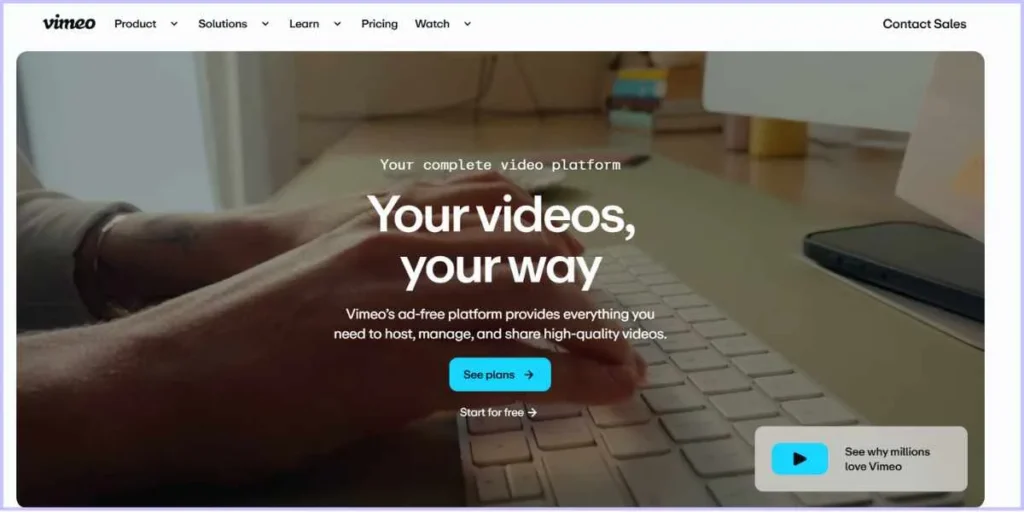
Vimeo is the brainy, artsy older brother of YouTube. It is an old platform and is considered the best platform of creative professionals. Vimeo is where filmmakers, animators, and graphic designers show their work. The platform is known to have a very fine quality video playback that supports 4K Ultra HD and HDR. The fact that it does not have ads and provides a clean viewing experience on its front facing content makes it feel premium and professional. It is one of the best YouTube alternatives. The Vimeo community is more oriented on providing constructive criticism and enjoying video-making as an art form, as opposed to going viral. It is not about pranks and memes but about short films, documentaries, and visual storytelling. It is like an online art gallery of video.
Key Features:
- Video streaming (up to 8K)
- No advertisements
- Videos with high privacy
- Video marketing and complex analytics to businesses
- Video on demand (VOD) to sell your work
Pros & Cons:
- Pros: Unbelievable video quality, professional community, no ads to the viewers, good portfolio building.
- Cons: Free plan has restrictions (upload limits), smaller audience than YouTube and is more of a professional tool.
- Best Uses: Creatives, filmmakers, artists and businesses that need premium video hosting.
- Monetization Options: Selling videos (Vimeo On Demand), subscriptions (Vimeo OTT), or client work by having it as a part of a portfolio.
Website: https://vimeo.com/
2. Dailymotion
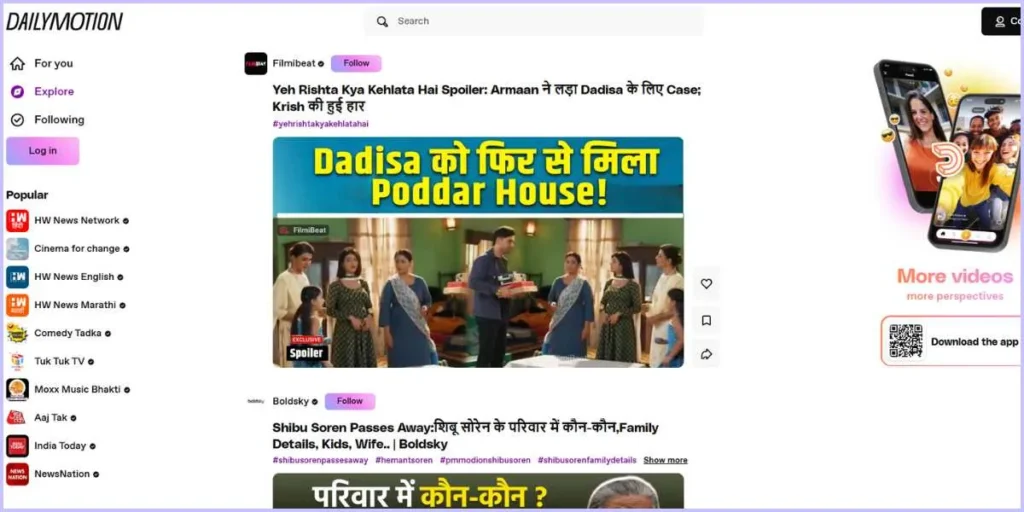
Dailymotion is likely the biggest competitor of YouTube in the aspect of look and feel. It is a large, general-interest video platform, which combines news, entertainment, sports, and music. A big portion of its international viewers is in Europe and Asia. To the viewers, the site is similar to YouTube in that it has a familiar layout, playlists, and channels. On the side of creators, Dailymotion has a partner program that some people claim is simpler to enter as compared to that of YouTube. The typical viewer is of an older age range, with the site tending towards professionally produced content produced by the established media partners, though user-generated content is also encouraged. It is a moderate, not too extreme, option in case you want something that is not too strange.
Key Features:
- Big upload sizes (up to 60 minutes and 2GB free).
- Partner monetization program.
- Multitasking picture-in-picture.
- Pay attention to news and professional contents.
Pros & Cons:
- Pros: The interface is familiar, there is less competition when you are a new creator, and the monetization is good.
- Cons: Not as many viewers as YouTube, ads can be as frequent as YouTube.
- Best Uses: News junkies, viewers that seek YouTube-like experience, creators that need to increase the audience.
- Monetization Options: In-stream video ads with its partner program.
3. Odysee (LBRY)
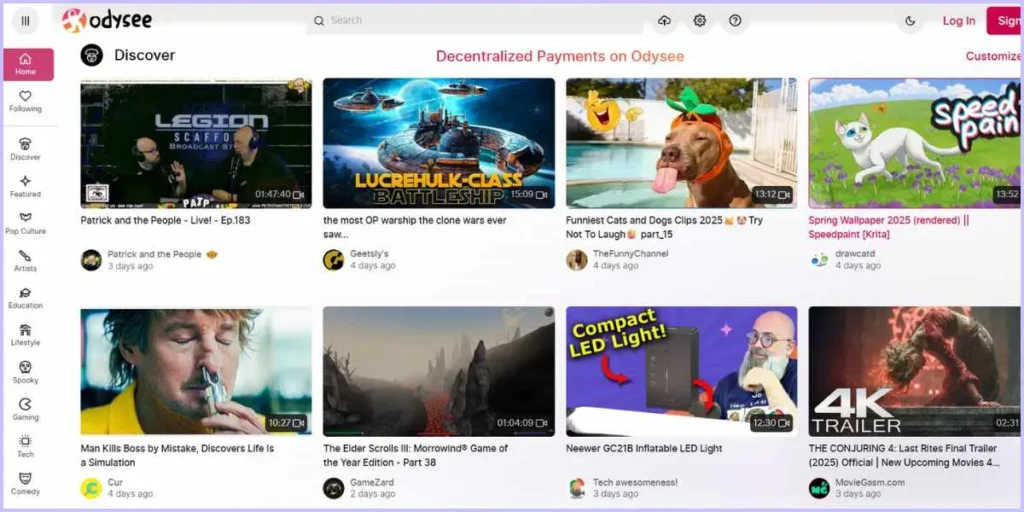
Odysee is powered by LBRY, a blockchain, which implies that it cannot be controlled by a single company. The users share power thus, it is difficult to censor the platform or even shut it down. Odysee is a large proponent of free-speech and creator independence. When you upload a video, you determine its cost (or make it free) and receive LBRY Credits (LBC) every time a video is viewed. It is one of the best Youtube alternatives. This contrasts to YouTube, which attracts individuals concerned with big-tech domination and enjoy the crypto sphere. The members of the community are enthusiastic about freedom and new technology.
Key Features:
- A decentralized blockchain (LBRY) was built on it.
- Censorship-resistant.
- The creators receive cryptocurrency (LBC) as a reward on views and uploads.
- Capability to synchronize an already existing YouTube channel.
- You are able to charge per view on your content.
Pros & Cons:
- Pros: Allows creators to own their work, does not violate free speech, monetization is unique.
- Cons: It can be confusing to not tech-savvy users, the number of users is limited, niche content.
- Best Uses: Creators who are worried about censorship, crypto lovers, and privacy-conscious viewers who care about freedom of speech.
- Monetization Options: Viewers can tip the user with LBC tokens, views, and other interactions.
4. Rumble
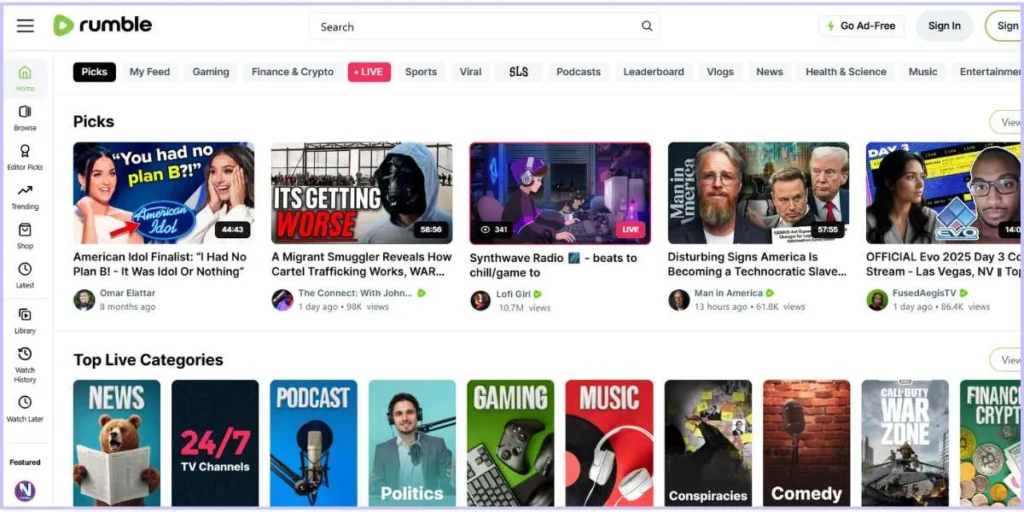
Rumble started as a platform where people could post funny videos of pets and babies, but it has since become a popular alternative to YouTube where free-speech reigns supreme. It is popular among political pundits and news sources that are marginalized by the mainstream media. It is one of the best YouTube alternatives. It provides an easy monetization system to its creators: Rumble assists in distributing videos to other large sites such as MSN and Yahoo, and it shares revenue with you. This is what makes Rumble a decent option to those creators that would like to reach and earn money but do not want to be tied to a single atmosphere.
Key Features:
- Very high level of free speech and low censorship.
- Revenue sharing and video licensing are some of the possible monetization opportunities.
- Easy to use interface.
- Serves as a video distribution company.
Pros & Cons:
- Pros: Clear monetization, creator friendly policy, very fast growing base.
- Cons: There is a high possibility of the content being highly biased to political issues, which may not be of interest to all people.
- Best Uses: Political pundits, freelance writers, and artists who desire a platform that is outspoken on freedom of speech.
- Monetization Options: Ad revenue share and selling your videos to partners of Rumble.
5. Twitch
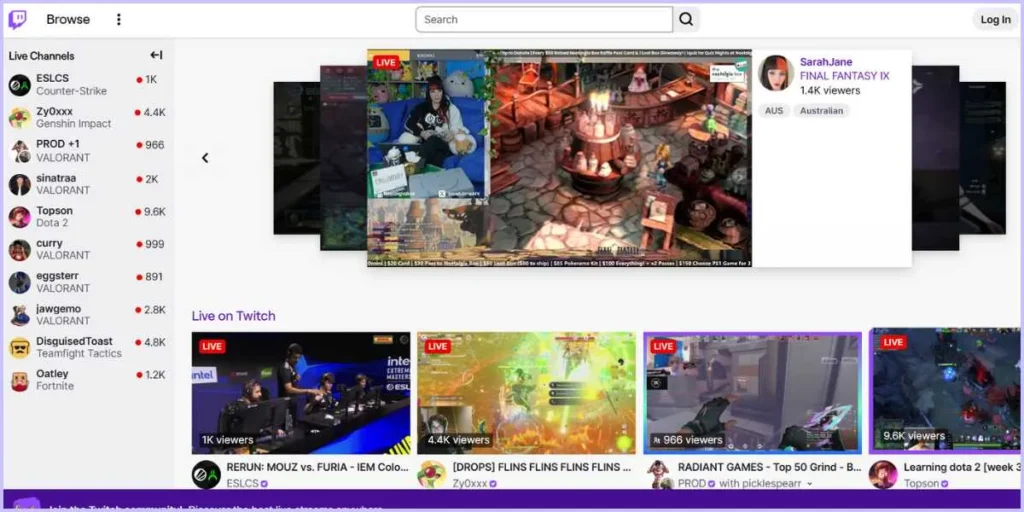
Twitch is primarily a live-streaming platform, but it is also a massive video site. It is most famous as a place to stream video games, but now it also streams a lot of other types of live content. The most popular one is the “Just Chatting” category, in which the creators merely chat with their viewers. Live music, art making, cooking shows, etc. are also present. Any live stream is stored as Videos on Demand (VODs) that form a big library of previous content. The community is the greatest asset of Twitch. The subscription model, emotes, and live chat creates a good relationship between the streamers and the audiences. This is a dynamic, action-packed and a very interactive setting.
Key Features:
- The first live streaming company
- It is very interactive using real-time chat.
- Good community tools (emotes, channel points).
- VODs store historical streams to be watched in the future.
- Twitch Prime (Amazon Prime) provides free subscription to channels.
Pros & Cons:
- Pros: Huge, engaged audience, great monetization of popular broadcasters, great community.
- Cons: Live-oriented to a great extent, discovery may be challenging to new streamers.
- Best Uses: Gamers, Live streamers, Artists, Musicians. Everybody is trying to develop a powerful, communicative society in real-time.
- Monetization Options: Subscriptions to viewers (subs). Gifts (Bits). Advertisement revenue, Sponsorship of brands.
6. Nebula
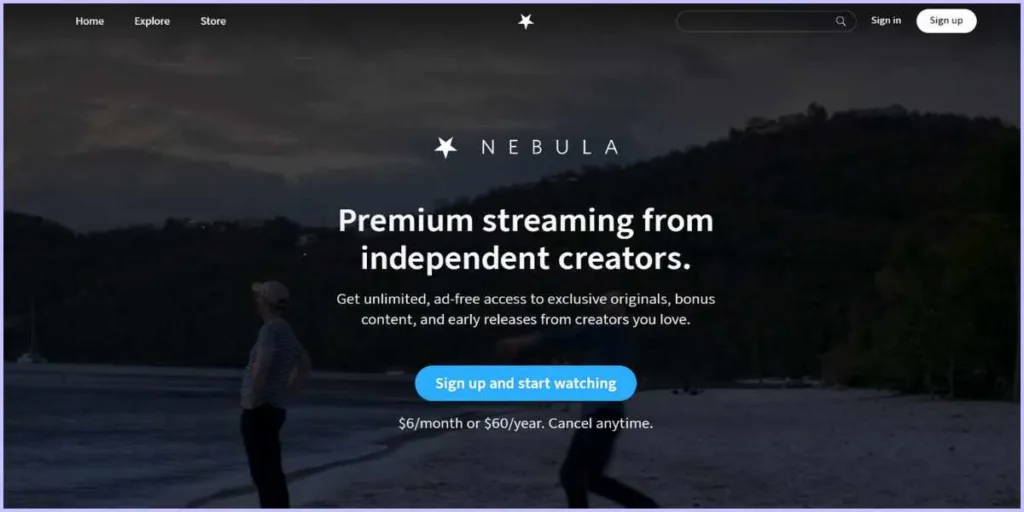
Nebula is a place where people create and love to learn. It is a subscription service that is paid at 5 dollars per month. In many cases it is bundled with the streaming service CuriosityStream. Marques Brownlee, LegalEagle, and MinutePhysics are all well-known education YouTubers that are on Nebula. Their normal YouTube videos can be found there with no ads and sometimes in advance. They also produce exclusive Nebula Originals that you can see only on Nebula. It is to provide creators with a platform where they do not need to be concerned with YouTube algorithms or advertisers. They are able to create the videos which they are interested in, and the audience who subscribes to them is able to get the videos of high quality and thoughtfulness without any intrusions.
Key Features:
- Owner-run and owned.
- No advertisements.
- Original exclusives (Nebula Originals).
- Access to videos of your favorite creators early.
- Focus on quality, thoughtful and educational content.
Pros & Cons:
- Pros: It can support the creators directly and has no advertisements, exclusive and high-quality content, and it promotes experimentation.
- Cons: Only a paid subscription, not as many videos as YouTube, only creators can be invited.
- Best Uses: Fans of popular educational creators, viewers who despise ads and would like to directly support content makers.
- Monetization Options: The share of subscription revenue will be given to the creators depending on the watch time.
7. Internet Archive
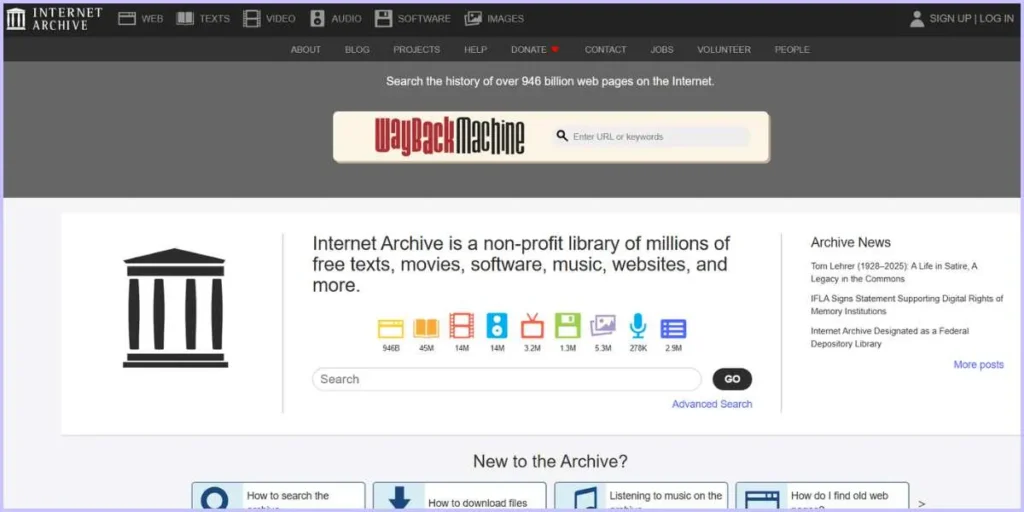
Think of a giant, free library which contains all the information on the net. That library is the Internet Archive. It aims at achieving Universal Access to All Knowledge. A large portion of that mission is in saving video. The video area of the Archive contains millions of videos: classic full-length films in the public domain, old government newsreels, educational lectures, and archived TV news broadcasts as well as user-uploaded videos. LIt is a serene, contemplative place on the internet, not a place of viral trends or influencers. It is not really a feed but more of a browsing experience such as in a massive, amazing library.
Key Features:
- Massive collection of movies, documentaries and historic footage that is in the public domain.
- Entirely free of cost to use and to upload content to preserve.
- Run by a non-profit organization.
- No advertising at all.
- Search engines which enable the user to filter the content according to the year, topic, creator and collection.
Pros & Cons:
- Pros: A unique place to find rare and historical material, free of charge, without advertisements, priceless to the researcher and student.
- Cons: The user experience is dated, video quality is highly inconsistent, and finding content is based on search as opposed to algorithmic suggestions.
- Best Uses: researchers, historians, students, documentary fans, and people who are just interested to know the media of previous decades.
- Monetization Options: N/A. Internet Archive is a digital library that is non-profit. It relies on public donations and is preservation and access oriented rather than commerce oriented.
8. DTube
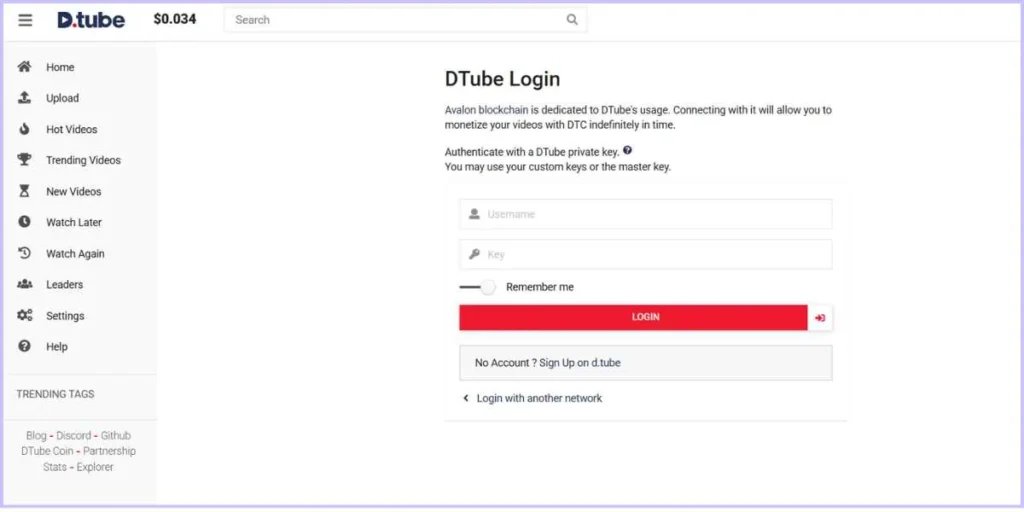
DTube is a blockchain-based video platform that is similar to Odysee but uses the Steem blockchain. Its major principles are free speech, no censorship, and user rewarding. In contrast to what YouTube does, which is to keep most of the ad money to itself, DTubes is sending crypto rewards directly to creators and even commenters. It is possible to obtain crypto by uploading a video or posting a helpful comment. The site is absolutely free of advertising, and the page of hot or trending videos is sorted by the number of rewards, not by some secret algorithm. Tube is not owned by a big company but by the community, which makes it a real alternative to the centralized platforms and appeals to the people that like a more democratic online space.
Key Features:
- Decentralized and blockchain.
- No advertising
- Platform that is censorship resistant.
- The users (both creators and commenters) can earn crypto.
Pros & Cons:
- Pros: It is decentralized in the real sense, there are no advertisements, it supports both creators and viewers.
- Cons: The interface is a bit clunky, not very beginner-friendly, there is still a small user base.
- Best Uses: Crypto lovers and powerful adherents of decentralization and freedom of speech.
- Monetization Options: Cryptocurrency (DTC) will be acquired by upvoting the videos and comments. It is possible to earn cryptocurrency (DTC) through the upvoting of videos and comments.
9. Wistia
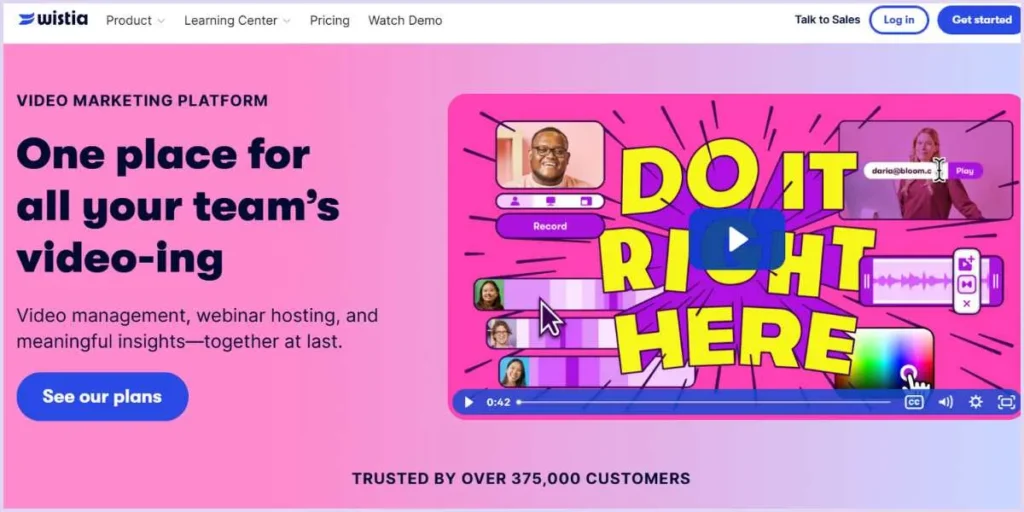
Wistia is not a competitor of YouTube in terms of casual audience. Rather, it is a powerful business instrument. It is a marketing, sales, and training video hosting platform. Whereas YouTube wants people to remain on its site, Wistia assists businesses to use video to attract traffic to their sites. Wistia provides in-depth analytics that reveal not only who has watched a video but also what parts of the video they watched multiple times or avoided. It also offers such tools as in-video call-to-action buttons and email capture forms. It is possible to customize the video player to fit the colors of any brand. In summary, Wistia is a refined, businesslike video marketing resource that companies that are serious about video marketing and who want full control over what they are marketing as well as their branding.
Key Features:
- Advanced analytics and heatmaps.
- The video player can be fully customized
- In-video forms and call-to-actions are part of marketing.
- Ad-free.
- Good compatibility with other business software.
Pros & Cons:
- Pros: Suitable to business purposes, strong marketing tools, fantastic analytics.
- Cons: It is very costly, not applicable to individual creators or entertainment, and has a limited free plan.
- Best Uses: Companies, marketers, and businesses who utilize video in sales, marketing and customer support.
- Monetization Options: Wistia is an application that is used to assist companies to earn their own income.
10. PeerTube
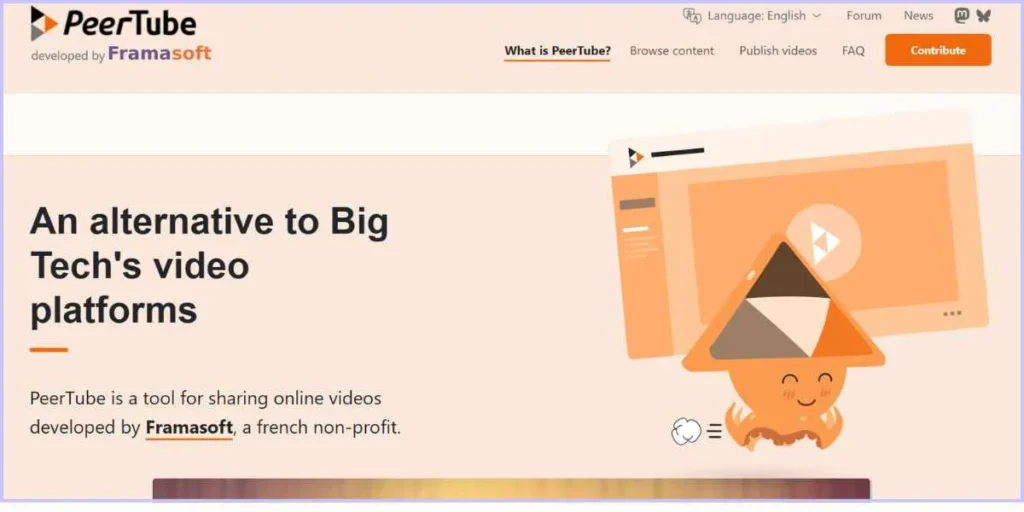
PeerTube allows you to consume videos in a decentralized manner that is not the same as Odysee or DTube. It is not a single large site, it is open-source software, which can be installed by anyone. This is the software that allows individuals to operate their own video hosting websites. These sites may be connected together to form a so-called federated network. Just imagine it as an email: you may have a Gmail account and send it to a Yahoo account. Similarly, you can subscribe to one of the PeerTube sites and view videos on numerous others. It is one of the best Youtube alternatives. PeerTube is an autonomous community-based platform and is aimed at open-source enthusiasts.
Key features:
- Federated and open-source model.
- No ads or tracking of the company.
- Peer-to-peer (P2P) streaming assists in the reduction of server loads.
- Independent communities run them (instances).
- Care about privacy and liberty.
Pros & Cons:
- Pros: Very personal, locally owned, non-advert driven, strong.
- Cons: It may be confusing to be in the right instance, content discovery may be fragmented.
- Best Uses: Privacy enthusiasts, open-source supporters, and communities that wish to host their own videos without the need of big tech.
- Monetization Options: Usually none built-in; there may be some cases that accept donations.
11. Facebook Watch
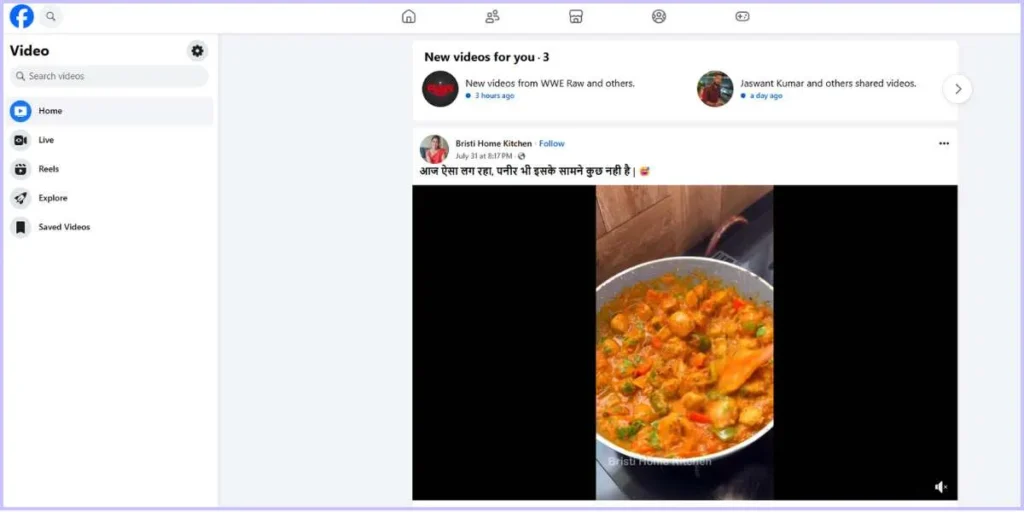
Nearly all people with access to the internet have a Facebook account and that is the greatest advantage of Facebook Watch. It is the video section of the platform, which is fully integrated into the social network that you use. It has a combination of content, including clips shared by your friends and family and original, professionally produced shows funded by Facebook. Since it is connected to your social graph, it is good at displaying videos that your friends are watching or those videos that are popular in your groups. It is a natural point of uploading video content especially to creators who already have a large Facebook Page. The level of entry is low and the possibility of a video being shared and going viral through friend networks is immense.
Key Features:
- Huge pre-existing audience.
- Facebook pages and groups can be easily incorporated.
- Blend custom programming and user created programming.
- Good social discovery characteristics
Pros & Cons:
- Pros: Possibility of reaching a large number of people, simple to use by those who are already on Facebook, effective in building a community.
- Cons: The video player is not as efficient as YouTube and the monetization regulations can be complicated.
- Best Uses: Content creators who have an audience on Facebook, brands, and social media influencers.
- Monetization Options: Fan subscriptions, brand partnerships and in-stream advertisements.
12. Instagram Reels / Video
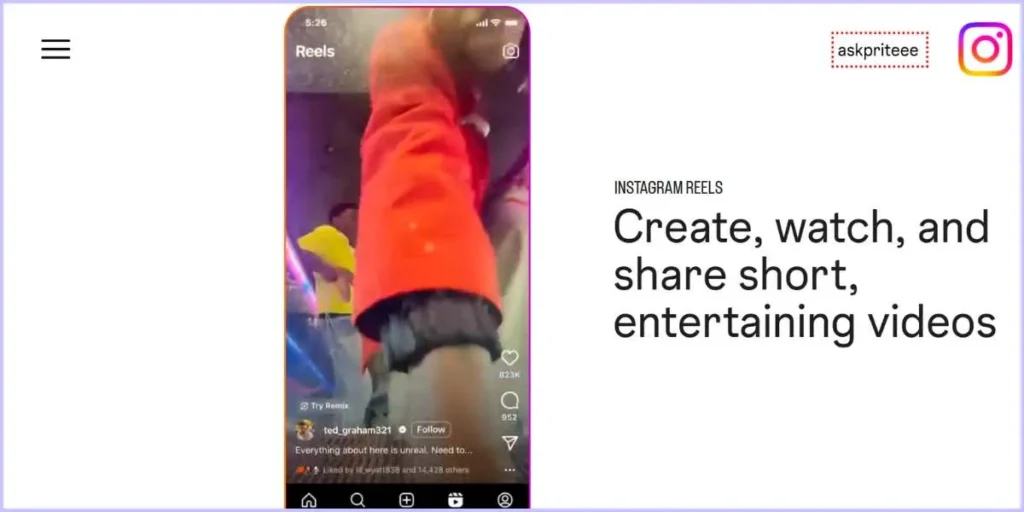
Facebook owns Instagram, and Instagram has aggressively gone into video. The short videos are no longer just short videos, as there are also Reels (short, vertical videos to compete with TikTok) and Instagram Video (longer-form content that merged IGTV and feed videos). Since Instagram is a visual-first platform, it is appropriate to fashion, food, travel, and fitness. To producers, it provides direct access to a very active audience. It is one of the best Youtube alternatives. The video component of the platform is supplemented by Stories, Shops, and direct messaging, which allows using it as a complete tool to create personal brands or companies. It is not so much a special location to watch videos as it is a daily routine of social media scroll.
Key features:
- Make video mobile-first and good-looking.
- Short reels of popular short reels
- Incorporation with a huge highly engaged social network.
- Brands and influencers have good tools.
Pros & Cons:
- Pros: A huge audience, a lot of activity, perfect in visual niches.
- Cons: Discovery of video is not ideal on desktop, and not ideal on long-form and educational content.
- Best Uses: Influencers, brands, artists and people who produce very visual content to reach a mobile audience.
- Monetization Options: brand deals, affiliate, Instagram reels play bonus program, and shopping tools.
13. Vevo
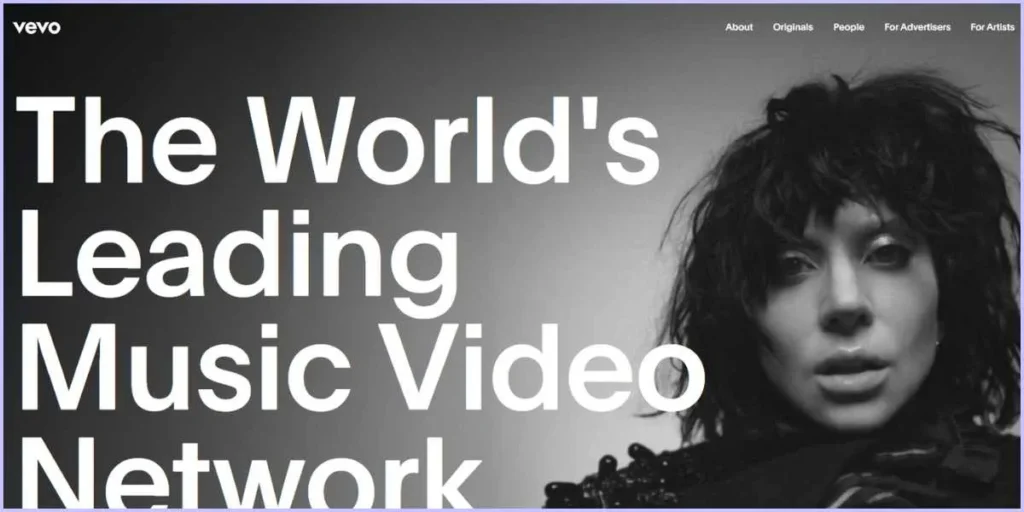
The Vevo logo is seen by many people who love music videos. Vevo is a collaboration between the largest record companies of the world (Universal Music, Sony Music). You are not able to upload videos, Vevo displays only official, high-quality music clips of the most popular artists. Although Vevo videos are frequently found on YouTube (the company has a large deal with Google), they can also be obtained through Vevo apps and sites. You will find playlists, premieres, and behind-the-scenes there. Vevo can be considered as the MTV of the digital era. It is not a YouTube competitor to the creators, but it is ideal to the viewers who simply want to watch the music videos without any distraction.
Key Features:
- Formal music videos only.
- Good sound and video.
- The material of the largest artists in the world.
- Playlist and show curation.
Pros & Cons:
- Pros: Everything is official, high quality, very good at music discovery.
- Cons: Just music videos, you cannot upload your own stuff.
- Best Uses: People who are fond of music and would like to have an exclusive site where they can find official music videos.
- Monetization Options: It is not applicable to users; this is how record labels monetize their videos.
14. Bitchute
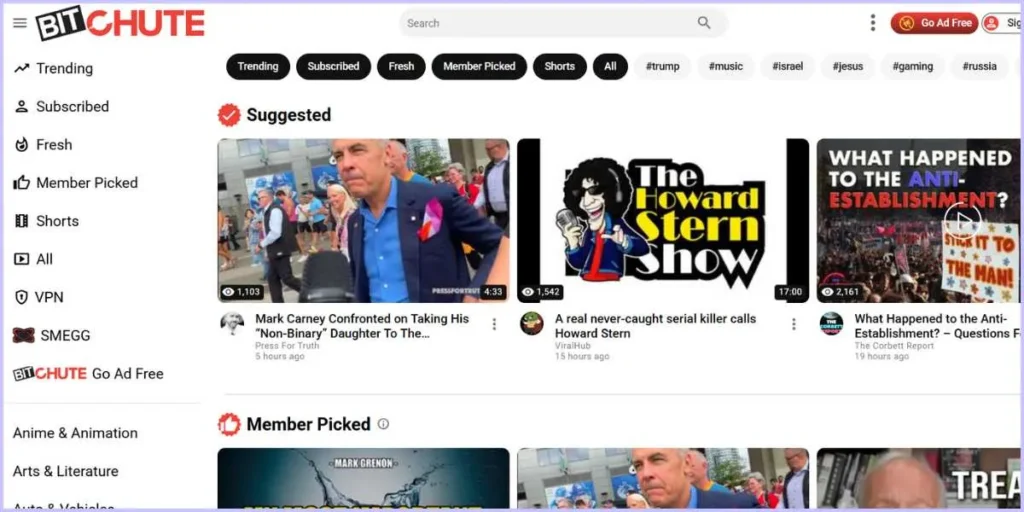
Bitchute is another video site that prioritizes free speech. It is based on peer-to-peer (P2P) WebTorrent technology, so as you watch a video, you also share it or host it to other viewers. This distributed model makes Bitchute difficult to take down. Like Rumble, it is a refuge to creators that have been banned or demonetized on YouTube, especially those whose ideas are controversial or alternative in nature. The interface of the site is user-friendly. It is one of the best Youtube alternatives. Bitchute does not have advertisements in a conventional manner. It does not, however, ask creators to be linked to their subscription or donation sites, instead granting them full control over how they can make money.
Key Features:
- P2P WebTorrent technology is used
- Free-speech policy.
- Takedown-resistant and censorship.
- Allows developers to integrate with their payment systems.
Pros & Cons:
- Pros: Great freedom of creators, durable technology.
- Cons: P2P technology may make it slow loading, containing a lot of controversial materials.
- Best Uses: Free-speech absolutists and those who have been de-platformed elsewhere.
- Monetization Options: Directly through the audience donation via the site such as Patreon or SubscribeStar in the description.
15. SproutVideo
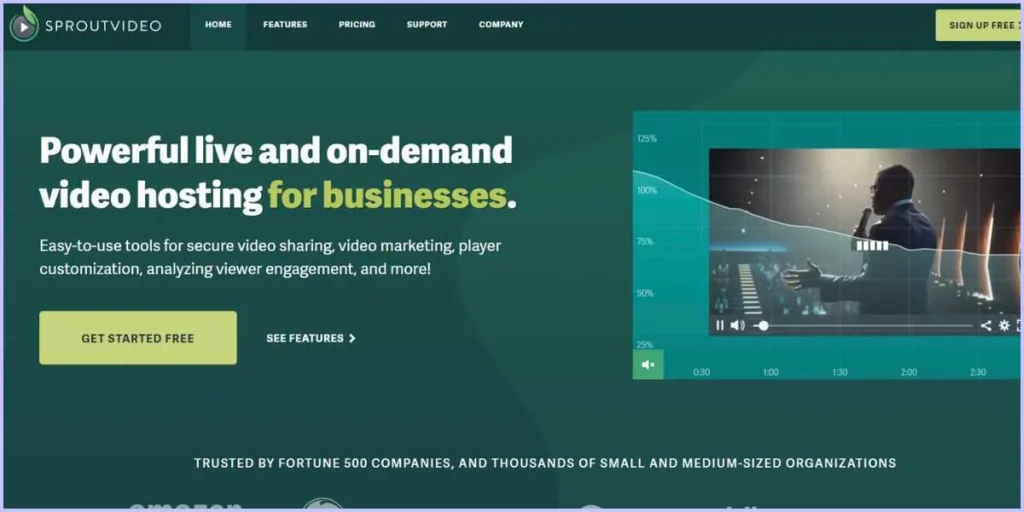
SproutVideo is also a premium video hosting service designed to serve businesses. It is a powerful competitor of Wistia because it has a different set of features and pricing plans. It provides businesses with all the tools they require to design, host, promote and measure their video contents. The features include full brandability of the video player, in-depth engagement analytics, and strong security features such as password protection and login protection of videos. It is one of the best Youtube alternatives. You can also make and design video sites which are appealing stand-alone websites to display video portfolios or training libraries. In sum, SproutVideo is an all-in-one and safe solution that can be used by any organization that considers video a central component of its business plan.
Key Features:
- Good security and privacy features.
- Granular analytics and engagement metrics.
- In the video player, lead capture forms are available
- The capability of developing personalized video websites.
Pros & Cons:
- Pros: It is very good in business, very secure and there are great customization abilities.
- Cons: It is costly, and it cannot be used on a personal basis or as entertainment.
- Best Uses: Business, online courses creators and any company that needs secure and customizable video hosting.
- Monetization Options: It is a business tool; the monetization is indirect through assisting businesses in capturing leads and making sales.
Final Thoughts
YouTube alternatives are awesome, and it is not going away, but online video is a lot broader and more diverse than a single site. Or, in case you are a creator who wants to be freer or a viewer who wants to have a new community, there is one more option that suits you.
Learning by exploration is the best way to learn. Choose one or two of these platforms that sound interesting and sign up and test them out. You may discover your new favorite creator or a community that you feel at home. The internet gives you options and you now know that you have many when it comes to video.
Suggested Read: All in One Social Media Tools
FAQs
Is there a real 1-to-1 YouTube alternative?
Not really. There is no other site that can compete with YouTube in terms of library size and the number of users.
Are these alternatives to YouTube safe to use?
Such websites as Vimeo, Dailymotion, and Twitch are quite safe. In decentralized or free speech sites, be as cautious as you would be on any web site, because the rules on content may not be as strong.
Is it possible to earn my living on these other platforms?
It is difficult, but it is possible. The top creators on Twitch, Rumble and direct sales on Vimeo earn a decent living.
Where do I have to pay to watch videos on these sites?
The majority of such platforms are free to access. The only exception is Nebula, which is a subscription service. There is also pay-per-view content on some platforms such as Vimeo which is set by the creators.


